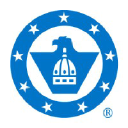🚀 Sign up Free for Public Company Valuation & Insights!
Sign up for free to get access to the best public company valuation and insights. Get started today and unlock the potential of your investments!
Sign up free Video Highlights
Capitol Federal Savings Bank
-9.72%
Financial services / Residential mortgage and retail banking
At a Glance | Core Facts | Company Due Diligence: | Industry Due Diligence: | Competitors | Stock Swings | News | Income | Balance | Cash Flow | Growth | Enterprise | Ratios | Metrics | Dividends | Risks | SWOT | Porter's Five Forces | PEST | Score Positive | Clusters | Reports | Web1. Financial Risk: Like all banks, Capitol Federal Savings Bank is exposed to financial risk, including credit risk (default by borrowers), interest rate risk (fluctuations in interest rates), and liquidity risk (inability to meet short-term obligations).
2. Economic Risk: The bank's performance is also affected by the overall health and stability of the economy. Economic downturns can result in reduced consumer spending, higher unemployment rates, and reduced demand for loans, affecting the bank’s profitability.
3. Regulatory Risk: As a financial institution, the bank is subject to numerous laws and regulations, including consumer protection laws and anti-money laundering laws. Non-compliance with these regulations can result in fines, penalties, and damage to the bank’s reputation.
4. Cybersecurity Risk: With the increasing use of technology in banking, Capitol Federal Savings Bank faces the risk of data breaches, hacking, and other cyber threats. These risks can result in financial losses, damage to the bank’s reputation, and loss of trust from customers.
5. Market Risk: The bank is exposed to market risk in the form of fluctuations in interest rates, exchange rates, and commodity prices. These changes can adversely affect the bank’s financial performance and its ability to manage its assets and liabilities.
6. Operational Risk: Operational risk refers to the potential for loss resulting from inadequate or failed internal processes, people, or systems. This can include errors, fraud, system failures, and employee misconduct.
7. Reputation Risk: Any negative publicity, lawsuits, or scandals associated with the bank can damage its reputation and lead to a loss of trust from customers and stakeholders.
8. Competition Risk: The bank operates in a highly competitive market, and faces competition from both traditional banks and emerging fintech companies. This competition can result in a loss of market share and pressure on the bank’s profitability.
9. Concentration Risk: The bank’s loan portfolio may be concentrated in certain geographic regions or industries, making it vulnerable to economic downturns or industry-specific risks.
10. Emerging Risks: The bank is also exposed to emerging risks, such as changing consumer behaviors, technological disruptions, and regulatory changes, which can impact its operations and financial performance.
Wait! There's more — sign up for free or log in